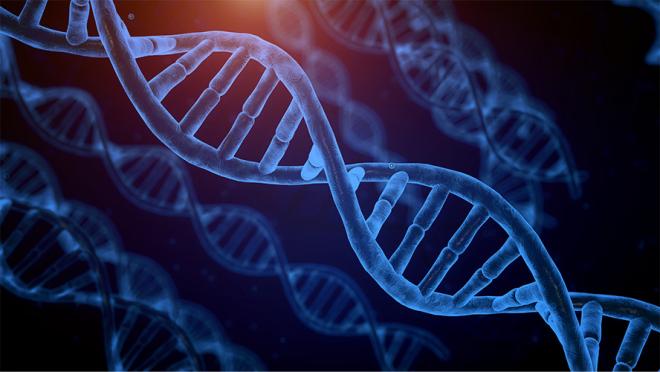
Researchers at UHN’s Princess Margaret Cancer Centre (PM) have revealed that a protein called Topoisomerase 1 (TOP1) — a regulator of DNA organization — can be used as a target for treating cancers involving the MYC protein.
MYC is a regulator of gene expression, which is a process where genes are encoded into proteins. MYC is known to be dysregulated in most human cancers and drive aggressive disease. “Although the inhibition of MYC can block tumour growth in lab settings, targeting it directly in humans has proven to be a challenge with no small molecule inhibitors of MYC advancing to patient care,” says Dr. Linda Penn, Senior Scientist at PM and senior author of the study.
“To effectively target MYC and inhibit its function, we decided to employ an alternate strategy and identify specific proteins or processes required for MYC to function as a potent cancer driver,” says Peter Lin, Doctoral Candidate at the University of Toronto and co-first author of the study.
The researchers used a gene-editing tool called CRISPR to systematically disable the function of different genes in breast cancer cell models where MYC is dysregulated. They then observed which genes were critical for the survival and growth of these tumour cells.
“We identified several genes that encode proteins responsible for proper DNA organization, called R-loop regulators,” said Dr. Corey Lourenco, former Postdoctoral Researcher in Dr. Penn’s lab and co-first author of the study. “We focused on one of these, TOP1, due to the availability of FDA-approved TOP1 inhibitors that are currently used as cancer treatments.”
R-loops are DNA structures that can occur during gene expression, playing crucial roles in gene regulation and maintaining genome stability. Regulatory proteins like TOP1 are important in controlling the initiation or resolution of R-loops, thereby averting potential issues that could lead to DNA damage.
“Upon further investigation, we confirmed that TOP1 was necessary for MYC-driven tumour growth in breast cancer cell models. One way we did this was by inhibiting TOP1 genetically and through the use of medications,” says Dr. Penn. “We were able to show that inhibiting TOP1 reduced tumour growth in our MYC-driven breast cancer models.”
In addition, by examining publicly available datasets, the team found that cancer cells with elevated MYC gene activity were the most vulnerable to TOP1 inhibitors (e.g., topotecan) and this discovery was further validated using patient-derived samples.
Motivated by the prevalent nature of MYC in driving cancer, the researchers propose a model where TOP1 is needed for MYC to drive tumour formation. This suggests that breast cancer cells with high MYC activity rely on TOP1 to resolve R-loop structures and are thereby vulnerable to treatments that block TOP1 and potentially other R-loop regulators. As several TOP1 inhibitors are clinically available, these findings open new potential therapeutic strategies for these types of cancers.
This work was supported by the Canadian Institutes of Health Research, the U.S. Department of Defense, Instituto de Salud Carlos III, Generalitat de Catalunya, CERCA Program to IDIBELL, and The Princess Margaret Cancer Foundation. Dr. Linda Penn is a Professor at the Department of Medical Biophysics, University of Toronto.
Co-author David W. Cescon is a consultant, on the advisory board of, and/or reports funding to AstraZeneca, Exact Sciences, Eisai, Gildead, GlaxoSmithKline, Inflex, Inivata, Merck, Novartis, Pfizer, Roche, Saga, Guardant Health and Knight. Dr. Cescon also reports a patent for methods of treating cancers characterized by a high expression level of spindle and kinetochore-associated complex subunit 3 (ska3) gene.
Lin P*, Lourenco C*, Cruickshank J, Palomero L, van Leeuwen JE, Tong AHY, Chan K, El Ghamrasni S, Pujana MA, Cescon DW, Moffat J, Penn LZ. Topoisomerase 1 Inhibition in MYC-Driven Cancer Promotes Aberrant R-Loop Accumulation to Induce Synthetic Lethality (link is external). Cancer Res. 2023 Dec 15;83(24):4015-4029. doi: 10.1158/0008-5472.CAN-22-2948. PMID: 37987734; PMCID: PMC10722143.
* Contributed equally to this article.

Topoisomerases manage the structure of DNA (e.g., the twisting and unwinding of DNA strands) and are important for many biological processes such as DNA replication, gene expression, and DNA organization. (Getty images)

